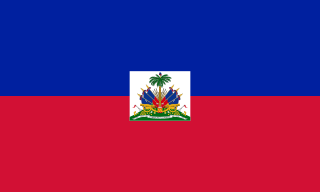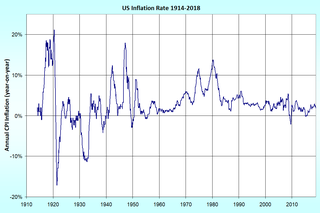
The recorded history of the Dominican Republic began when the Genoa-born navigator Christopher Columbus, working for the Spanish Crown, happened upon a large island in the region of the western Atlantic Ocean that later came to be known as the Caribbean. It was inhabited by the Taíno, an Arawakan people, who variously called their island Ayiti, Bohio, or Quisqueya (Kiskeya). Columbus promptly claimed the island for the Spanish Crown, naming it La Isla Española, later Latinized to Hispaniola. What would become the Dominican Republic was the Spanish Captaincy General of Santo Domingo until 1821 except for a time as a French colony from 1795 to 1809. It was then part of a unified Hispaniola with Haiti from 1822 until 1844. In 1844, Dominican independence was proclaimed and the republic, which was often known as Santo Domingo until the early 20th century, maintained its independence except for a short Spanish occupation from 1861 to 1865 and occupation by the United States from 1916 to 1924.

The recorded written history of Haiti began on 5 December 1492 when the European navigator Christopher Columbus happened upon a large island in the region of the western Atlantic Ocean that later came to be known as the Caribbean. It was inhabited by the Taíno, and Arawakan people, who variously called their island Ayiti, Bohio, or Kiskeya(Quisqueya). Columbus promptly claimed the island for the Spanish Crown, naming it La Isla Española, later Latinized to Hispaniola. French influence began in 1625, and French control of what was called Saint-Domingue—modern-day Haiti—began in 1660. From 1697 on, the western part of the island was French and the eastern part was Spanish. Haiti became one of the wealthiest of France's colonies, producing vast quantities of sugar and coffee and depended on a brutal slave system for the necessary labor. Inspired by the message of the French Revolution, Haitian slaves rose up in revolt in 1791 and after decades of struggle the independent republic of Haiti was officially proclaimed in 1804.

This is a list of United States territorial acquisitions and conquests, beginning with American independence. Note that this list primarily concerns land the United States of America acquired from other nation-states. Early American expansion was tied to a national concept of manifest destiny.

Hamilton Fish was an American politician who served as the 16th Governor of New York from 1849 to 1850, a United States Senator from New York from 1851 to 1857 and the 26th United States Secretary of State from 1869 to 1877. Fish is recognized as the "pillar" of the presidency of Ulysses S. Grant and considered one of the best U.S. Secretaries of State by scholars, known for his judiciousness and efforts towards reform and diplomatic moderation. Fish settled the controversial Alabama Claims with Great Britain through his development of the concept of international arbitration. Fish kept the United States out of war with Spain over Cuban independence by coolly handling the volatile Virginius Incident. In 1875, Fish initiated the process that would ultimately lead to Hawaiian statehood, by having negotiated a reciprocal trade treaty for the island nation's sugar production. He also organized a peace conference and treaty in Washington D.C. between South American countries and Spain. Fish worked with James Milton Turner, America's first African American consul, to settle the Liberian-Grebo war. President Grant said he trusted Fish the most for political advice.

Samaná is a province of the Dominican Republic. Its capital is Santa Bárbara de Samaná, usually known as Samaná.

Orville Elias Babcock was an engineer, and American Civil War general in the Union Army. An aide to General Ulysses S. Grant during and after the war, he was President Grant's private secretary at the White House, Superintendent of Buildings and Grounds for Washington D.C., and a Florida-based federal inspector of lighthouses. Babcock continued to serve as lighthouse inspector under Grant's successors Rutherford B. Hayes, James A. Garfield, and Chester A Arthur.
Samaná English is a variety of the English language spoken by descendants of black immigrants from the United States who have lived in the Samaná Peninsula, now in the Dominican Republic. Members of the enclave are known as the Samaná Americans.
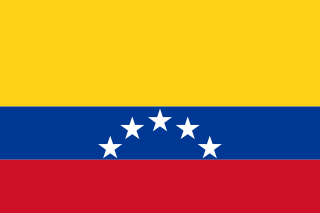
The Republic of Spanish Haiti, also called Independent State of Spanish Haiti was the independent state that resulted from the defeat of Spanish colonialists from Santo Domingo on November 9, 1821, led by General José Núñez de Cáceres.
Afro-Dominicans are Dominicans of predominant Black African ancestry. They represent 5.26% of the Dominican Republic's population, according to the 1996 electoral census based on Dominican identity cards data, or 10.9% of the Dominican population, according to the 1960 population census.
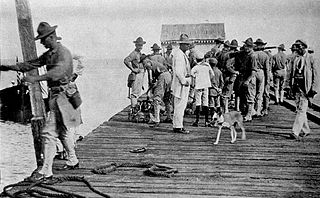
The first United States occupation of the Dominican Republic lasted from 1916 to 1924. It was one of the many interventions in Latin America undertaken by the military forces of the United States in the 20th century. On the 13 May 1916, Rear Admiral William B. Caperton forced the Dominican Republic's Secretary of War Desiderio Arias, who had seized power from Juan Isidro Jimenes Pereyra, to leave Santo Domingo by threatening the city with naval bombardment.
Samaná Bay is a bay in the eastern Dominican Republic. The Yuna River flows into Samaná Bay, and it is located south of the town and peninsula of Samaná.
The Dominican Restoration War was a guerrilla war between 1863 and 1865 in the Dominican Republic between nationalists and Spain, who had recolonized the country 17 years after its independence. The war against the Spaniards ended in July 1865 with Dominican independence restored but with the country devastated and disorganized, and most of the peasantry in arms.

A member state of the Caribbean Community is a state that has been specified as a member state within the Treaty of Chaguaramas or any other Caribbean state that is in the opinion of the Conference, able and willing to exercise the rights and assume the obligations of membership in accordance with article 29 of the Treaty of Chaguaramas. Member states are designated as either More economically developed country (MDCs) or Less economically developed countries (LDCs). These designations are not intended to create disparity among member states. The Community was established by mainly English- speaking Caribbean countries, but has since become a multilingual organisation in practice with the addition of Dutch-speaking Suriname on 4 July 1995 and French and Haitian Creole speaking Haiti on 2 July 2002. As of 4 July 2002 there are fifteen full members of the Caribbean Community, four of which are founding members.

A referendum on transferring ownership to the United States was held on 9 January 1868 on the islands of Sankt Jan and Sankt Thomas, two of three main islands in the Danish West Indies. In the referendum, held by universal male suffrage, voters could approve or reject the outcome of negotiations for the sale of the two islands to the United States for US$7.5 million. The third island, Sankt Croix, was to be sold separately to the US at a later date.
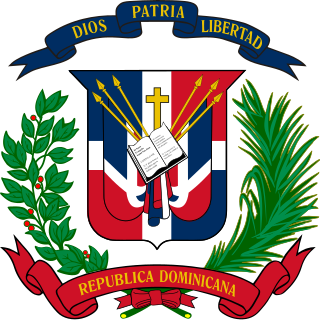
A referendum on leasing the Samaná Peninsula the United States for 99 years was held in the Dominican Republic on 19 February 1873. The proposal was approved by 99.91% of voters, but was never implemented after President Buenaventura Báez was overthrown on 2 January 1874.

The Six Years' War (1868–74) was a civil war in the Dominican Republic that "constituted the third war of independence fought by the Dominican people", in this case against the administration of President Buenaventura Báez, which in 1869 negotiated the Dominican Republic's annexation to the United States. According to the Dominican intellectual Pedro Henríquez Ureña, this war was a critical phase in the creation of Dominican national consciousness because, having already differentiated themselves from the Haitians in the first war of independence and the Spaniards in the second, the Dominicans asserted their incompatibility with the United States.




